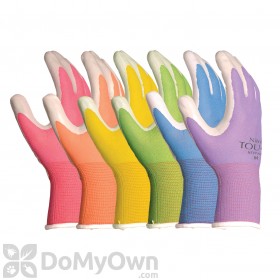
There are more rumors and myths about rats and mice than perhaps any other pest. While many myths seem feasible, it is important to know the difference between fact and fiction for proper rodent control. Here are some of the most common rat and mouse myths we encounter.
MYTH: Rodents will go outside to die after consuming rodenticides (rat poison)
FACT: No known rodenticide will cause rats or mice to leave a structure after consuming it. Anti-coagulants such as the bromadiolone found in Contrac All-Weather Blox Rodenticide will generally cause death within four to ten days of consumption, but there is no guarantee as to where the rodents will die. Because of this delayed effect, rodents will often die in their nests or burrows, or other unknown locations that may be hidden in a property.
Because of the health hazards that accompany decaying rodents and the danger of rodenticides to non-target animals, snap traps or glue board traps are always a better choice for rodent control inside the home. Always wear gloves when handling carcasses, and dispose of dead rodents immediately in a tightly sealed bag.
MYTH: Rodents will dry up without smelling after consuming certain rodenticides
FACT: Again, no known rodenticide will have this affect. While there are odor control products that will help eliminate the odors resulting from decaying rodents, there are none known to prevent such odors.
MYTH: Rodents will seek water after consuming certain rodenticides
FACT: No known rodenticide will make a rat or mouse extra thirsty. While rats do require water daily, mice get most of their water from the foods they eat. Rodents have already found a food or water source nearby if they are nesting in a particular area. Mice will only explore areas within about 30 feet of their nests.
MYTH: Cheese is an ideal bait for rodent traps
FACT: Professional trappers usually prefer meats, peanut butter, or even chocolate to cheese for effective baits. Mice prefer seeds and fruit to cheese. Moist foods will be ideal especially in dry climates because mice get most of their water through foods. Materials such as cotton balls may also attract rodents as female rodents will collect it for nesting.
MYTH: There is an effective, homemade rodenticide formula
FACT: If there were an effective rodenticide made from household or all-natural products, it (hopefully) would have already been on the market. For those concerned with rodents' discomfort or more "humane" ways to get rid of rats and mice, remember that the human health hazards associated with rodents - particularly in food establishments - should far outweigh concerns for the rodents themselves. Humane live traps are available for mice and rats, but always check legal health regulations for rodent control in sensitive areas like food handling establishments, schools, and hospitals.
MYTH: The most important rodent problem is chewing damage
FACT: The health hazards associated with rodents are far worse than the property damage they create. While holes and other damage may be repaired, diseases and parasites are much more complicated problems.Rats and mice contaminate stored food, animal feed, and cargo with their droppings, urine, and fur.
Both rats and mice carry parasites and spread disease. The Norway rat in particular is a known carrier of salmonella, leptospirosis, and trichinosis. Rat bites are not, however, concerns for rabies transmission in the way dog, cat, or other wild animal bites are.
MYTH: Cats and dogs provide effective rodent control
FACT: While some cats and dogs may chase mice or rats, rodents can avoid them by traveling in areas where pets can't. Pet foods will generally attract more rodents than pets will scare away.
MYTH: Seeing rodents during the day indicates a larger population
FACT: The signs of a population, such as burrows, damage, and droppings, are a better indicator than actual rodent sightings. Rats and mice are more active when there is less danger, which is often at night, but they are not only nocturnal creatures. Rats move individually, rather than in "packs," and will usually stay within a small area, travelling only for food and water.
MYTH: Rodents constantly chew to keep their teeth worn down and sharp
FACT: Rats and mice self-sharpen their teeth by grinding the top and bottom teeth together. Most chewing on surfaces like wood or soft metals is to enlarge openings for gathering nesting materials.
MYTH: The presence of rodents always indicates poor sanitation
FACT: While poor sanitation will certainly not deter rodents, even the cleanest of homes and businesses can harbor a rat or mouse population. If rodents can find access inside a building, they may feed on pet food, grain, seeds, or vegetables in addition to or instead of garbage.







